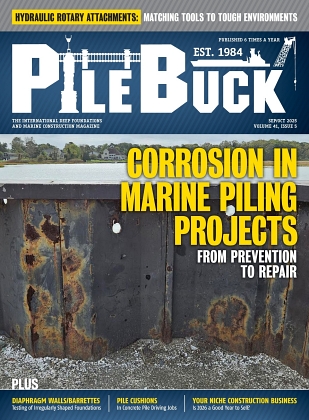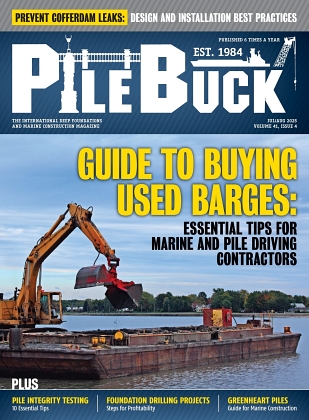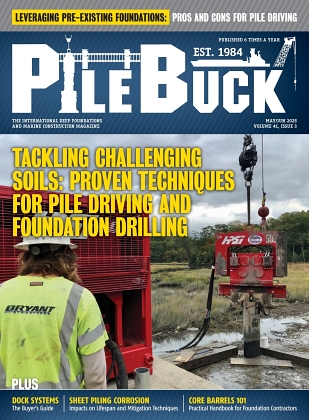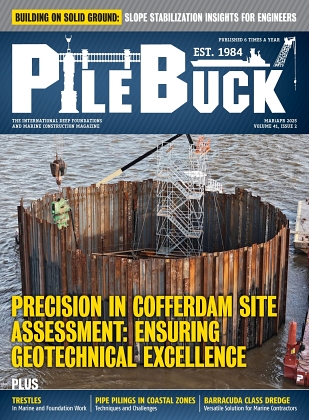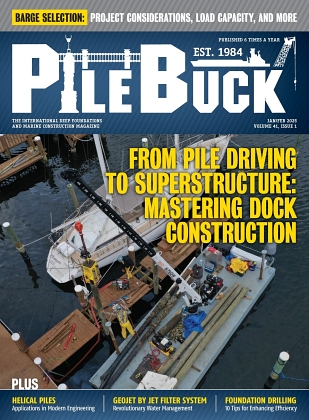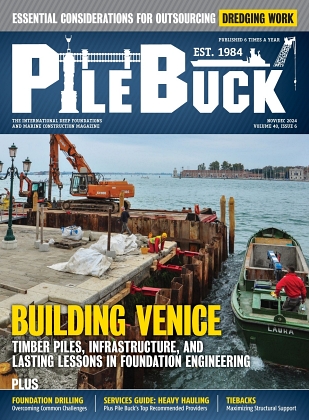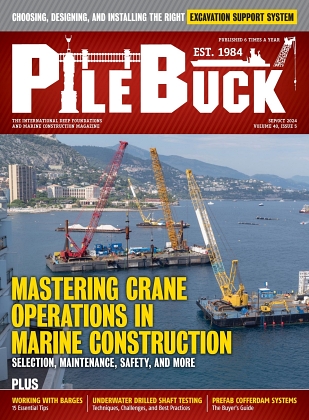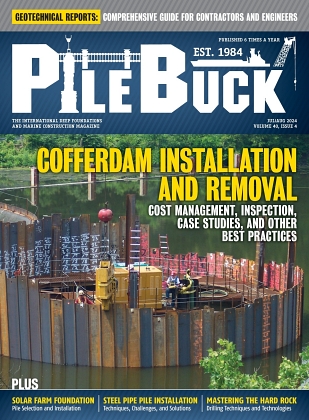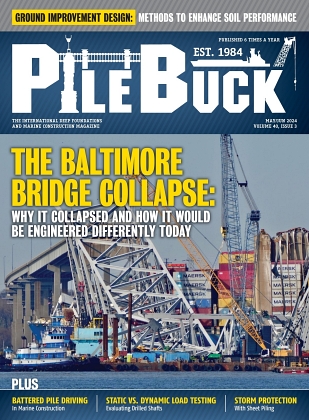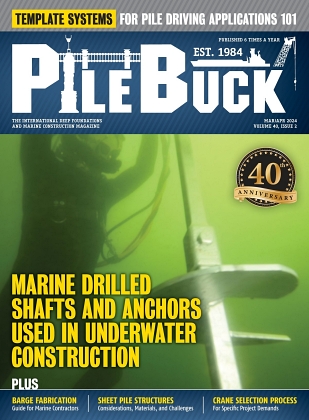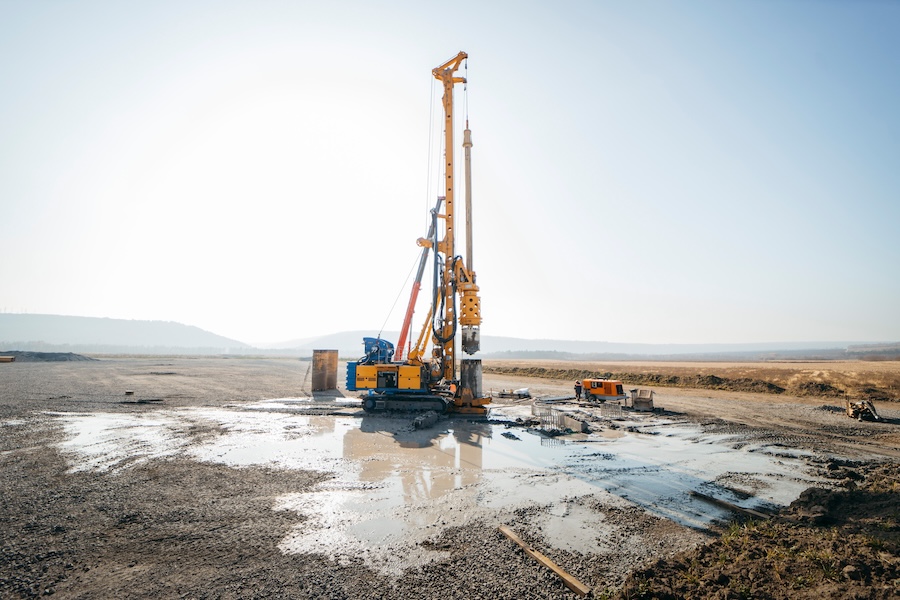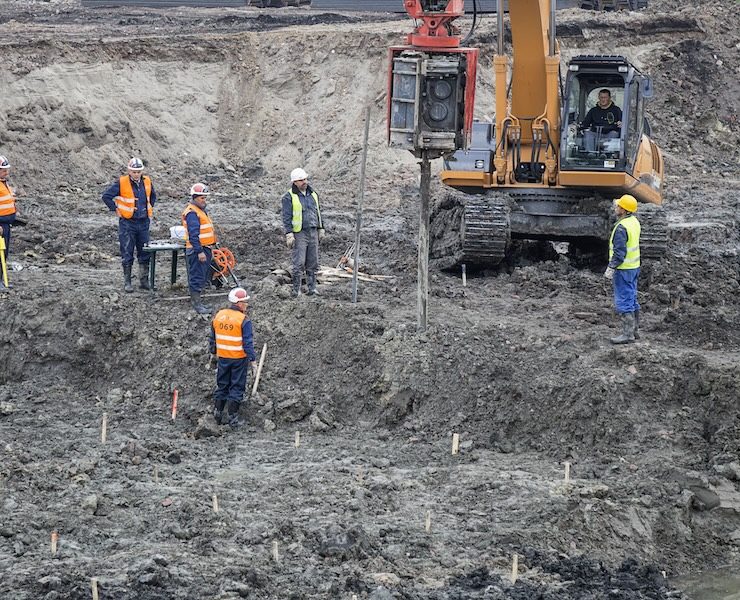Tackling Challenging Soils: Proven Techniques for Pile Driving and Foundation Drilling
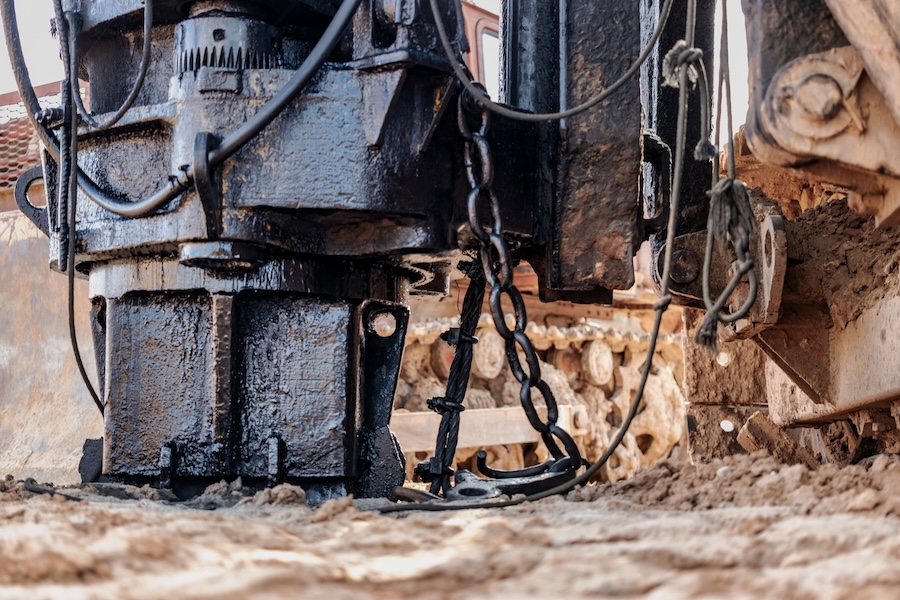

View the complete article here.
Challenging soils—including expansive clays, liquefiable sands, bouldery tills, and more—are likely to create obstacles for deep foundation projects. These conditions can cause pile refusal, borehole collapse, or unexpected settlement—inflating costs and delaying timelines. Successful pile driving and foundation drilling in such soils require meticulous planning, specialized equipment, and adaptive strategies. This article provides a comprehensive guide, divided into two parts: one for pile driving and one for foundation drilling. Each section offers 10 proven techniques to navigate challenging soils—ensuring stable foundations, operational efficiency, and compliance with industry standards.
Part 1: Techniques for Pile Driving in Challenging Soils
Pile driving in challenging soils demands precision to overcome high resistance, variable subsurface conditions, and environmental constraints. From cohesive clays that resist penetration to loose sands prone to liquefaction, the following 10 techniques equip contractors to drive piles effectively—ensuring foundation reliability and project success.
1. Conduct Robust Geotechnical Investigations
Start with detailed site characterization using Cone Penetration Testing (CPT), Standard Penetration Testing (SPT), and geophysical methods like ground-penetrating radar (GPR). In karstic soils, seismic refraction can detect voids—guiding pile placement. Comprehensive soil data informs pile type, length, and driving strategy—minimizing risks of refusal or misalignment per ASCE geotechnical guidelines.
2. Select Optimal Pile Types
Match piles to soil properties—steel H-piles for bouldery soils, precast concrete piles for expansive clays to anchor below active zones, and open-ended pipe piles for loose sands to reduce soil displacement. Composite piles (e.g., concrete-filled steel) offer versatility in heterogeneous soils. Proper selection ensures drivability and load capacity.
3. Choose the Right Pile Driver
Select drivers based on soil and pile type. Vibratory hammers excel in granular soils like sands, reducing friction, while diesel or hydraulic impact hammers penetrate cohesive clays. In mixed soils, hybrid drivers with switchable modes provide flexibility. Calibrate equipment to manufacturer specifications to optimize energy transfer and prevent overdriving.
4. Monitor Penetration in Real Time
Use sensor-equipped pile drivers—such as Pile Driving Analyzers (PDA)—to track blow count, penetration rate, and soil resistance. Real-time data helps identify obstructions or premature refusal, allowing immediate adjustments. In variable soils, this ensures piles reach design depths without damage—following ASTM D4945 standards for dynamic testing.
5. Employ Ground Improvement Techniques
Pre-treat unstable soils to ease driving. Vibro-compaction densifies loose sands, reducing liquefaction risks—while lime injection stabilizes expansive clays. In karstic soils, low-pressure grouting fills voids—creating a uniform driving medium. These methods enhance pile performance and reduce installation time.
6. Minimize Vibration and Noise
In urban or sensitive areas, use low-frequency vibratory drivers or hydraulic push systems to reduce ground vibrations that could destabilize loose soils or damage nearby structures. Pre-augering in cohesive soils lowers driving resistance and noise. Compliance with OSHA noise standards and local regulations is essential for project approval.
7. Adjust Driving Sequences
Plan pile installation sequences to avoid soil disturbance. In soft soils, drive piles from the center outward to prevent compaction-induced resistance. In stiff clays, space piles to minimize soil heave. Sequential driving, informed by site-specific soil data, maintains soil integrity and ensures uniform pile performance.
8. Use Pre-Drilling or Jetting
In dense or bouldery soils, pre-drilling or water jetting can loosen the ground—reducing driving resistance. Jetting is effective in sands, while pre-drilling suits rocky tills. Control jetting pressure to avoid excessive soil displacement to maintain foundation stability.
9. Implement Load Testing Early
Conduct pre-construction load tests, per ASTM D1143, to validate pile capacity in challenging soils. Static or dynamic tests identify potential issues like insufficient bearing or excessive settlement. Early testing allows design adjustments, ensuring piles meet project specifications without costly rework.
10. Plan Robust Contingencies
Prepare for unexpected conditions with spare piles, alternative drivers, and flexible designs. In karstic soils, have grouting equipment ready for void stabilization. If refusal occurs, consider shorter piles or layout changes. Contingency plans, backed by thorough soil data, ensure project continuity and cost control.
Part 2: Techniques for Foundation Drilling in Challenging Soils
Foundation drilling in challenging soils requires specialized tools and strategies to maintain borehole stability, bypass obstructions, and achieve precise shaft alignment. Whether navigating swelling clays or erratic tills—these 10 techniques optimize drilling operations, minimize downtime, and deliver robust deep foundations.
1. Use Advanced Subsurface Mapping
Combine borehole sampling with geophysical tools like sonic logging or electrical resistivity tomography to detect boulders, voids, or weak layers. In karstic soils, cross-hole seismic testing maps irregularities—informing rig selection and casing needs. Accurate mapping reduces drilling surprises and guides efficient strategies.
2. Select Tailored Drilling Equipment
Choose rigs suited to soil conditions—dual rotary drills for loose sands, down-the-hole hammers for rocky tills, or continuous flight augers for swelling clays. Equip rigs with variable torque and crowd control to adapt to soil transitions. Proper selection, aligned with ACI 336 standards, ensures borehole stability and drilling efficiency.
3. Monitor Drilling Parameters
Use drilling parameter recorders to track torque, thrust, rotation speed, and penetration rate in real time. These metrics detect obstructions or soil changes, enabling on-the-fly adjustments. In heterogeneous soils, real-time monitoring prevents tool wear and ensures shafts meet design depths.
4. Optimize Drilling Fluids
Use polymer-based fluids for loose sands to prevent collapse, or bentonite slurries for swelling clays to counter soil pressure. Adjust fluid viscosity based on soil properties, and monitor recirculation to avoid clogging. In frozen soils, heated fluids maintain borehole integrity without thawing surroundings—following industry best practices.
5. Deploy Temporary Casings
Advance temporary casings in unstable soils like liquefiable sands or soft silts to prevent collapse. In karstic soils, casings bridge voids—ensuring alignment. Use telescoping casings for deep shafts with soil transitions. Remove casings carefully to avoid soil suction.
6. Leverage Machine Learning
Integrate machine learning to analyze geotechnical data and predict obstruction locations, optimizing drill paths. In bouldery soils, models recommend bit changes or casing points—reducing deviations. Cloud-based platforms combine real-time drilling data with predictive algorithms, improving efficiency across diverse soils.
7. Maintain Equipment Rigorously
Challenging soils accelerate wear on bits, augers, and casings. Inspect tools after each borehole, especially in abrasive tills, and use carbide-tipped bits for rocky soils. Keep spare tools on-site to minimize downtime. Regular maintenance, per manufacturer specifications, extends equipment life and ensures consistent performance.
8. Control Drilling Speed
Adjust drilling speed to soil conditions—slower speeds in cohesive clays prevent borehole squeezing, while faster speeds suit loose sands. In rocky soils, moderate speeds reduce bit wear. Automated rigs with speed control systems optimize penetration, maintaining borehole quality and reducing operational costs.
9. Use Grouting for Stability
In karstic or fractured soils, apply low-pressure grouting to stabilize boreholes before or during drilling. Cementitious or chemical grouts fill voids, ensuring shaft integrity. Monitor grout volume to avoid over-pressurization to support consistent drilling progress.
10. Conduct Pre-Drilling Tests
Perform pilot borings or test shafts in challenging soils to validate drilling methods and casing requirements. In heterogeneous soils, tests identify optimal bit types and fluid mixes. Pre-drilling data, guided by ACI 336.3R, informs full-scale operations—reducing risks of borehole collapse or misalignment.
View the complete article here.
How can I drive piles effectively in challenging soils?
Use proper soil investigation, select suitable pile types and drivers, and monitor penetration in real time.
What techniques prevent borehole collapse during foundation drilling?
Use tailored drilling rigs, temporary casings, and optimized drilling fluids for soil-specific stability.

